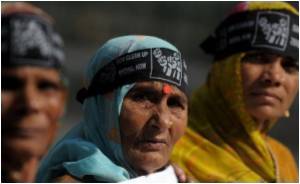
As many as 3,000 new-born children are either mentally or physically challenged and in many cases both, said Jyotirmay Samaddar, a doctor from the city who has been working for the last 20 years with the victims of the world's worst industrial disaster.
Moreover, in many cases the abnormalities are unique and vastly different from the existing ones, say doctors.
"While the effects of the disaster were visible in the second generation, it is now increasingly becoming evident even in the third generation with a large percentage of children being born with congenital anomalies," Samaddar told reporters.
"We have surveyed around 20,000 families from the affected areas and found that almost 3,000 children have been born with serious deformities and a majority of them suffer from multiple deformities," said Samaddar.
Samaddar also said that the ground water of the area had been steadily contaminated much before the disaster that struck on the night of Dec 2-3, 1984.
Advertisement
Bhopal-based doctor Devendra Panchal, who too has been treating the victims over the years, said that in many cases the abnormalities were vastly different from known and existing disorders.
Advertisement
Talking about a nine-year-old girl Ganga, who is both physically and mentally challenged, Panchal said: "Initially we all thought that she suffers from cerebral palsy. But her disorder, though similar to the disease, is different in many ways."
Ganga can neither walk nor talk and only groans to communicate. However, her thousand watt smile attracted photo journalists at the programme, and they vied with one another for her attention.
"Ganga's mother died while giving birth to her and the father abandoned her after learning about her deformity. I have been running from pillar to post seeking help but I have not given up hope. The government one day will surely come to our help," said her grandmother Ram Kali.
Source-IANS








